When working with Photoshop Elements, it is crucial to be able to move around the workspace safely and quickly. Understanding the basics of navigating will make editing your images significantly easier. This guide will show you how to effectively navigate the workspace of Photoshop Elements, master zooming and moving images, and fully unleash your creative potential.
Key Takeaways
- You can create a new file to utilize the tools of Photoshop Elements.
- It is important to understand and adjust the dimensions and resolution of the file.
- The magnifying glass and hand tool are your key tools for effectively navigating the workspace.
Step-by-Step Guide
To use Photoshop Elements correctly, you should start with a new file. When the program is opened in expert mode, you will initially see a blank workspace. This can be a bit intimidating since the tools on the left side are not active. This is because you haven't opened a file yet. To change this, click on "File" at the top left and select "New". Then click on "Blank File".

It is crucial that you create a new file now because without an image or file, you cannot use the tools properly. Give your file a name, such as "first file". This is the first step towards a productive workspace.
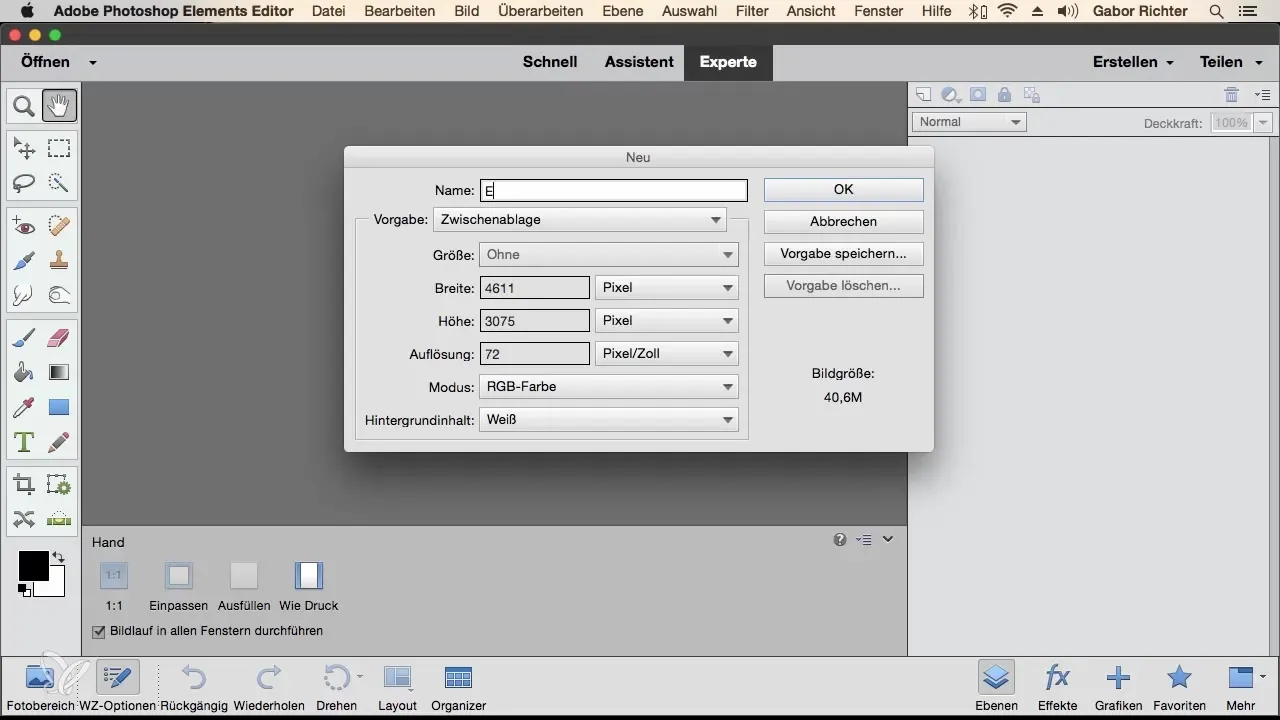
Next, you have the option to set the width and height of your file. Choose the unit of measurement that suits you best – whether it's pixels, centimeters, or millimeters. For example, if you want to create a large image for print, you can select a width of 162 cm and a height of 108 cm.
The resolution is also important. If you only want to use your image for the web, a resolution of 72 pixels is sufficient. However, for high-quality print products, I recommend a resolution of 300 pixels. You can also choose the color mode. RGB is ideal for color images, while grayscale is suitable for black and white images. If you are not sure when to use Bitmap, you can ignore this option for now.
For the background, you can choose between a transparent background or a solid color surface. I recommend setting the background to "Transparency," as this is generally the default option in Photoshop Elements. Confirm your settings with "OK," and you will see a workspace where you can get creative.
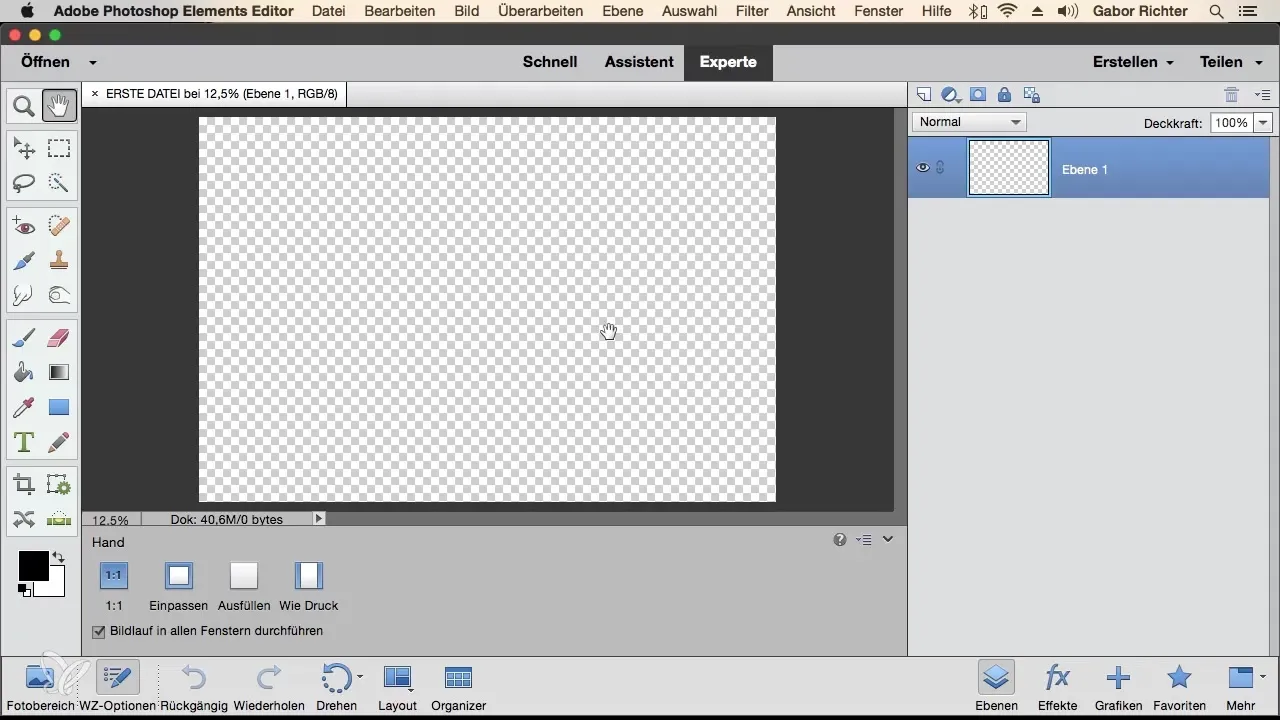
Now that you finally have a document available, let's turn our attention to the tools. The magnifying glass and the hand tool are particularly important here. With the magnifying glass, you can zoom in or out as needed, and with the hand tool, you can change your position on the workspace.
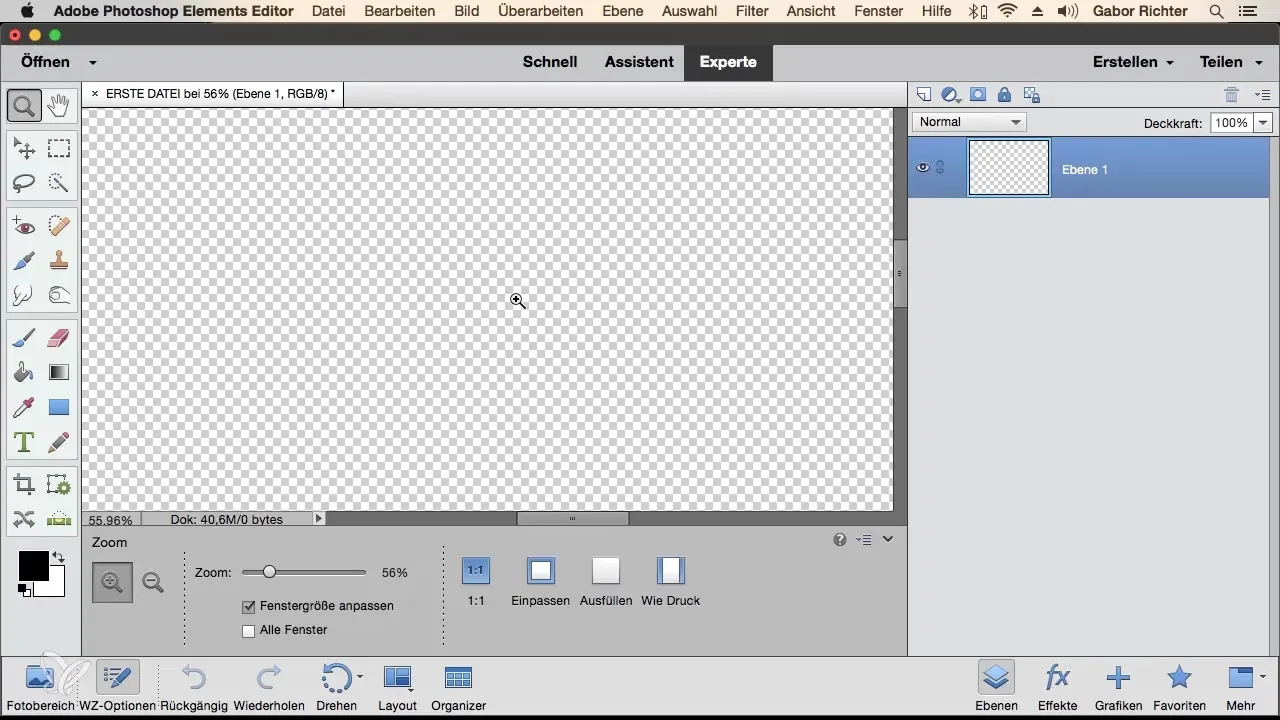
The magnifying glass is especially handy for closely examining details in your image. When you select the magnifying glass, you can easily zoom into an image and also zoom out, helping you to utilize both the overview and detail view.
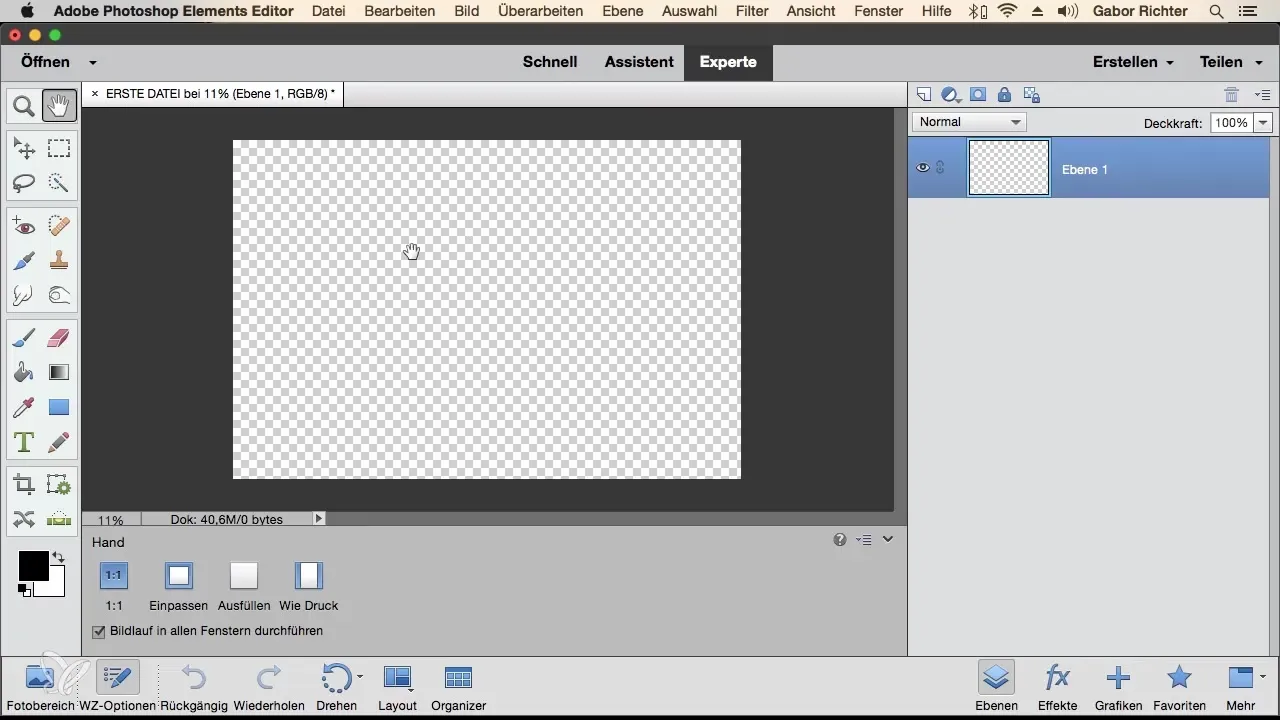
The hand tool is meant for moving your image. You can use it to shift the view on the workspace and find the spot you want to edit. The interplay of zooming and moving is simply essential for working efficiently.
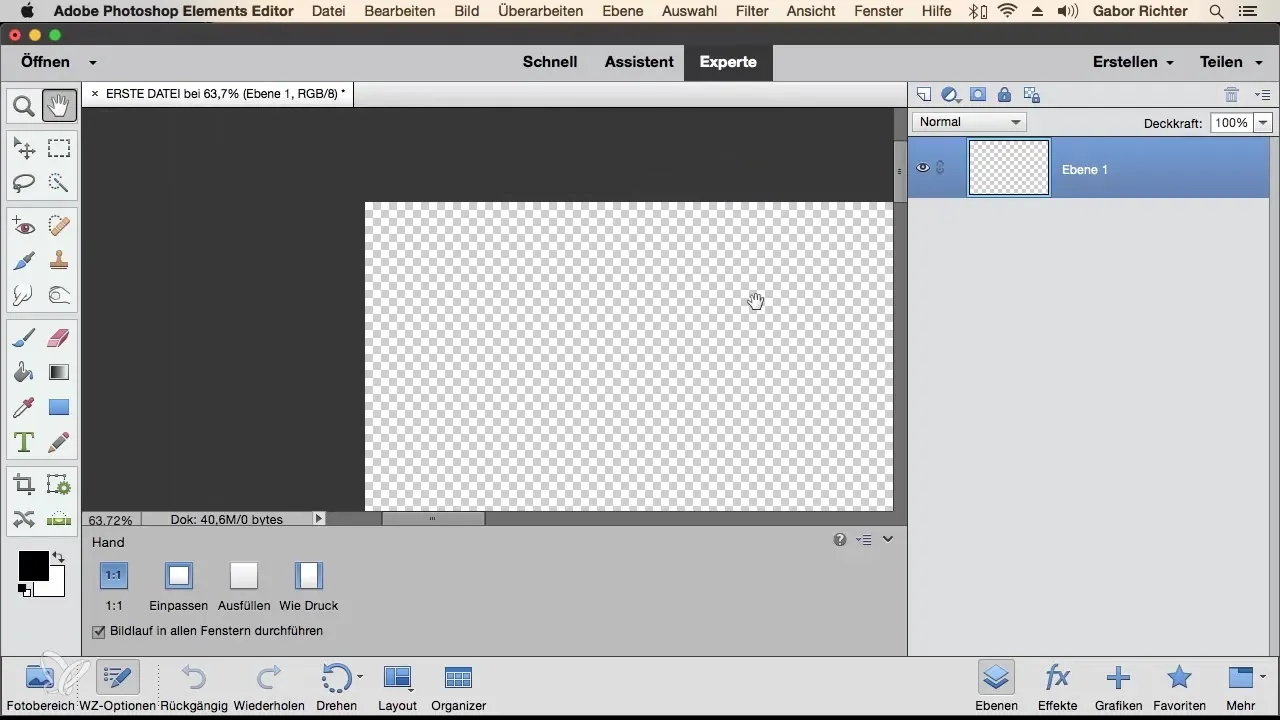
If you want to get a quick overview of your entire workspace, you can easily do this with a double-click on the image. This feature adjusts the view so you can maintain an overview.
This workspace, where the checkered pattern structure is visible, represents your subject. Note that the gray area around the checkered pattern area should not be seen as a picture frame; it is merely the workspace where you are working. Think of your workspace as a desk where your image is lying.
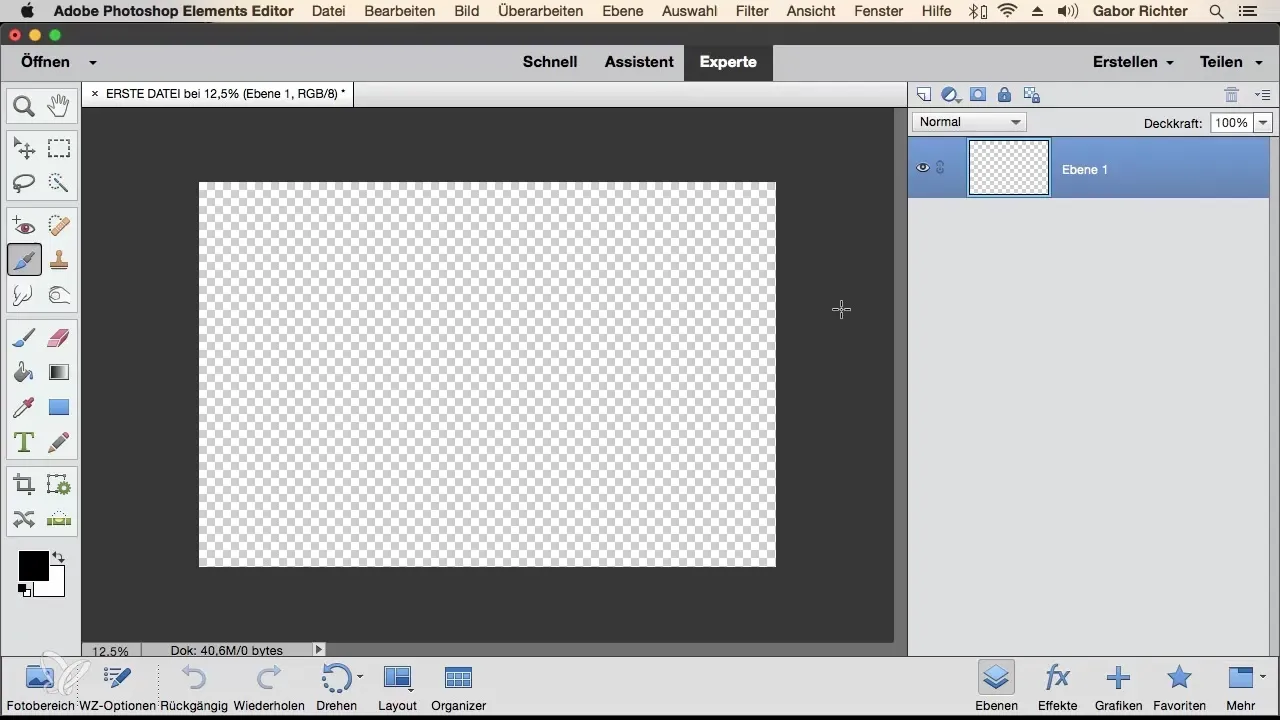
Summary – Navigating in Photoshop Elements
Navigating in Photoshop Elements using the magnifying glass and the hand tool is key to efficiently editing your images. By creating a new file and understanding the basic settings, you can use the software to your advantage.
Frequently Asked Questions
What dimensions can I choose for a new file?You can choose between pixels, centimeters, and millimeters.
How important is the resolution of my file?The resolution is crucial, especially if you plan to print your images.
What do I use the magnifying glass for?With the magnifying glass, you can zoom in and out of your image to see details better.
Which tool moves my image in the workspace?The hand tool is responsible for moving your image and adjusting the view.
What does transparency as a background mean?A transparent background allows you to work without a color behind your image.


